June 21, 2016
I've Been a Picture-Taking Person All My Life: An Interview with a Young Squamish Photographer
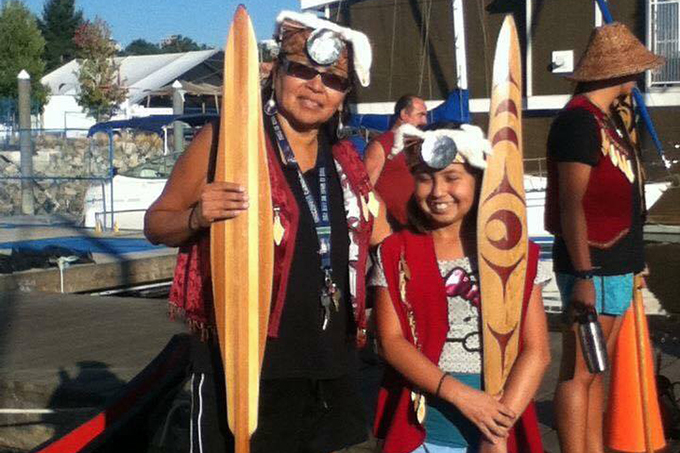
Dominique Nahanee (Tsawaysia Spukwus) is a talented young artist from the Squamish First Nation. One of her photographs is currently on display at the ArtStarts Gallery as part of the View Finders exhibition. Dominique took part in the Tillikum Lens Project, a photography project involving three different Indigenous communities, including youth from the Squamish First Nation, the Osoyoos Indian Band and Xet'olacw Community School in Mount Currie.
Our Gallery Manager, Juliana Bedoya, recently interviewed Dominique to hear her thoughts about participating in this project and using photography as a medium of creative expression, as well as her reflections on community, culture and what it means for us to celebrate National Aboriginal Day.
Hi Dominique! Can you please tell us a bit about yourself?
I am Dominique and I am Squamish Nation. I am 15 years old and I'm in Grade 9 at Don Ross Secondary. I am living in Squamish. I've lived here most of my life, but the first four years I lived in North Vancouver at Seymour Creek.
How has it been for you to grow up in your community? What have been some valuable experiences that have made you become the young creative woman you are today?
When I came to Squamish I didn't really know anybody, but when I was younger I called everyone my cousin and I was a really outgoing kid. I still am and I make lots of friends wherever I go. My family is very into the culture so I would always go with my dad or my mom to their workshops. I would go with my mom to help her perform at places and do openings. So that's probably one of the most valuable parts of me growing up here.

Can you tell us about how you got engaged in the Tillikum Lens Project?
I was told about it, that the idea was to get more experience working with cameras. I like taking pictures of things. I've always liked to take pictures of things. When I went to San Francisco my mom bought me a camera and I took pictures of everything. I've been a picture-taking person all my life.
Tell us about one of your photos from the Tillikum Lens Project.
The one at the ArtStarts Gallery is of my dog at the creek. All I really wanted to present was that. I also found it ironic because her name is Coho and that's a fish and she was at the river. I found that kind of funny because it's like, "Coho is at the river". Also, she looked really dramatic because at the time I had the settings in black and white. She looked really dramatic in black and white and really cool. And the water that day was nice.
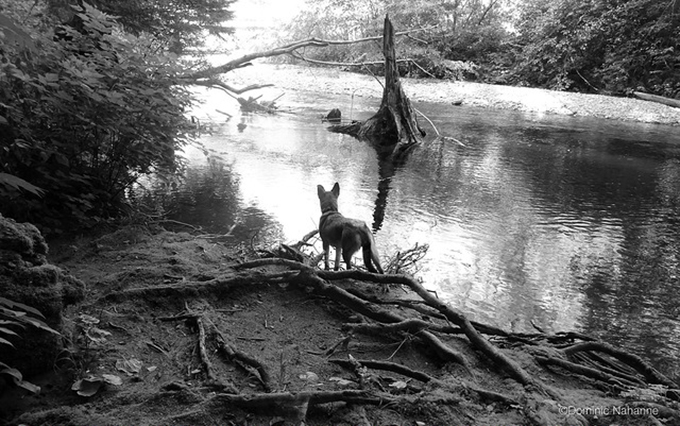
Is photography the main artistic medium that you engage in?
Most likely, yes, but I do a lot of cultural art, too. I do weaving but I take a lot of pictures, too. When it is raining out I like to go for walks and take artsy pictures or just pictures in general.
How do you feel when you're taking photos?
I feel good. I love taking photos, just the satisfaction of how good it looks after. And if it doesn't, I can just take different angles to have it how I want it to be.
Where do you think your inspiration comes from?
I'm not sure, I guess it's nature because we've got a lot of nature in Squamish. It is so nice to go outside for a walk and explore around in the bush. Or just even along the sidewalk.
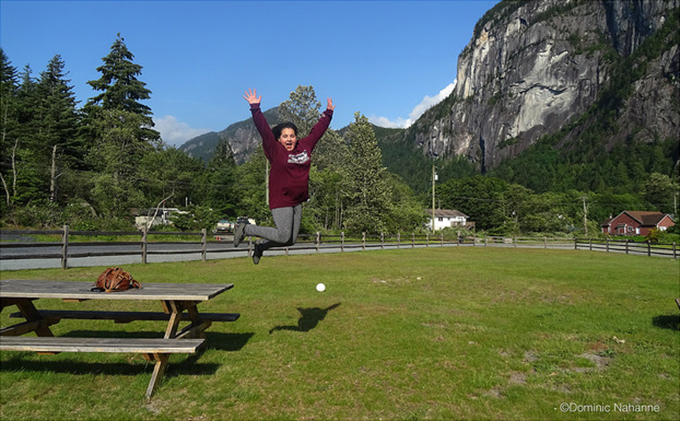
Are there any Indigenous artists around Squamish or elsewhere who you admire or view as role models?
Well, my mom definitely is a big one. She takes lots of pictures. And my uncle Rick, he is an artist and I really like looking at his art. I also recently went to the Museum of Anthropology to look at everyone's art there.
How does creativity manifest in your life?
A lot of people in my family are artists. My uncle Rick is a well-known artist who has totem poles in Scotland and he visits there often. He has friends there and all over the world. Both my cousins—his sons—are artists, too. My cousin Austin, who is in his 20s now, is learning how to do animations. He is longing to make cartoons. My cousin James does paintings and he is also picking up after his dad and he does carvings, too.
How do you think your community has shaped your identity and who you are now?
I have a lot of elders in my community and they help me if I am going through rough times. That helps me, shapes me in the way I act and how I stand myself up. My family in general, they are very supportive so they help me with my ideas. My mother supports me when I take my pictures, too.
Is there any advice that an elder in your life has given you that you always carry with you?
I don't have one at the top of my head, but I always think of what I do or what I say before I say it or before I act and I just think, "would my elders be proud if I did this?"
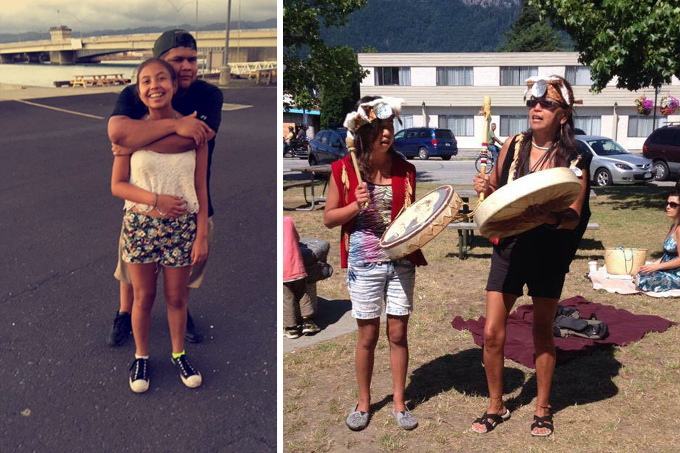
What do you wish everyone understood about being an Indigenous young person in Canada today?
That would probably be the effect of residential schools because this affected my family and affects a lot of people's families. Some families have it a lot worse than I do. A lot of the families here are very fortunate, our community isn't as bad as others. Some people had it really hard.
How do you see your role as a young woman in the new generation in making others better understand the effect of residential schools?
I help raise awareness because my grandma went to residential school and so did my uncle Bob. I listen to their stories and I have listened to their stories multiple times so I can get a better understanding. I have done some research on them and I have listened to other elders' stories. I listened to my uncles because they are the first generation going to public school. I did a project recently and I just did a presentation today, actually. I was telling about what happened to them because they would get abused if they practiced or spoke the language or any of the culture in general. Others got hurt by that and other people died, people lost family members during residential schools. I asked my mom lots of questions about residential schools, I asked my grandma about it and I'm in a First Nations class where we have learned about it.
Do you speak the Squamish language?
I am currently learning the language but we don't have many fluent speakers. We have maybe 10 in total—only two of them live in Squamish. We have a Squamish dictionary, so we are using that and at my school we have a First Nations class. Our teacher is from the Squamish Nation so we learn the language and throughout the year we do things that involve other parts of Canada. Last year we did a type of beading from the Ontario area. We also do weaving, drum making and we learn about other places, too.
Are there any other Indigenous communities that you admire or feel connected to?
I am part Hawaiian, so I admire Hawaiian culture. When I went to Hawaii, I met some of more of my family. They know how to speak their language there.
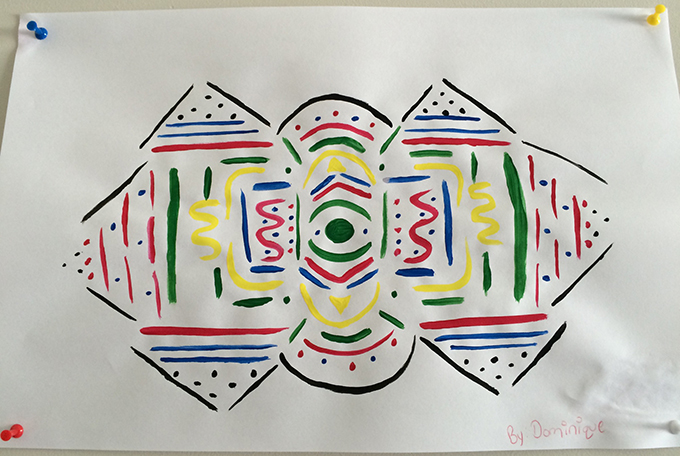
Is there anything else that you would like to say about National Aboriginal Day? What would you like people to recognize on that day?
Recognizing what we've been through and how we are strong people. This just shows that everyone can make it through something. We made it through residential schools, like many other people who have been colonized and have been assimilated, being treated like they are nothing.
How do you think we can all move forward from something like this?
For me, it's like at our funerals—we do the sad part first and we celebrate after. We celebrate their life and what they did. We celebrate the good times. When my great-grandma passed away, we were obviously very sad about it, but then we celebrated her. In her life she survived cancer three times, before this time it really got to her. That's how she left us, but it was just good to know that she finished her suffering and that she's in a better place. That's how I think of it. It is just good to know that we are in better places now. And then after all the sadness and sorrow, it's time to celebrate and be happy.
Thank you, Dominique!
You can visit the ArtStarts Gallery to see Domique's photo of Coho at the river, presented as part of the View Finders exhibition.
You're also invited to join us for free guided tours of the exhibition today, June 21, in honour of National Aboriginal Day.
If you're not able to make it to Vancouver, be sure to explore the Tillikum Lens Project website to learn more about this program and see a gallery of Dominique's other photos. We have also created this video about the Tillikum Lens Project:
Past Stories
Search by category
Accessibility | AIC Projects | Arts Integration in Action | ArtStarts Artists | ArtStarts Team | Community Events and Engagement | Exhibitions | Grants | Guest Blog | Infusion Pro-D | Knowledge Philanthropist | Meet a Community Art Star | Showcase | Supporters | The Next 20

